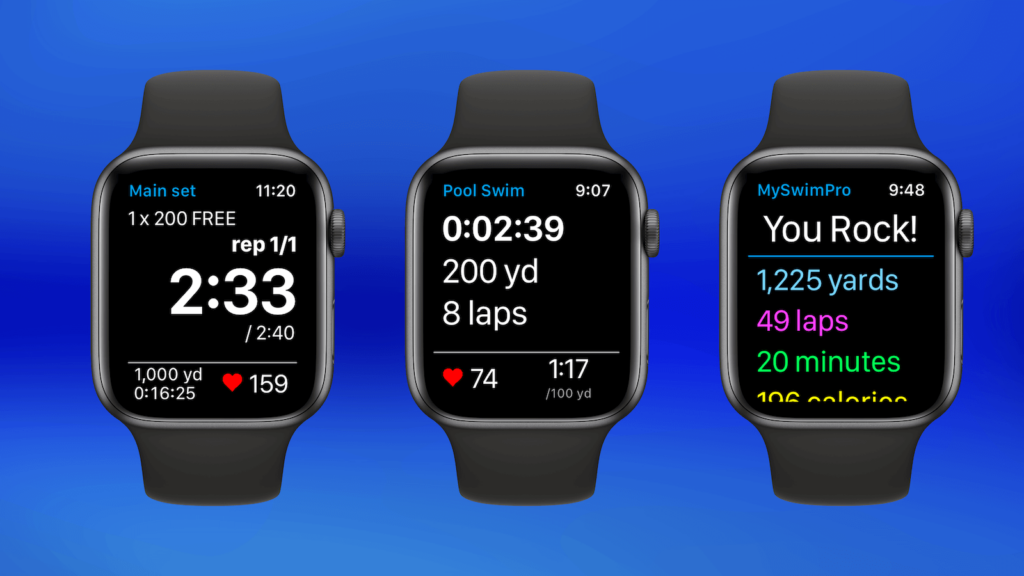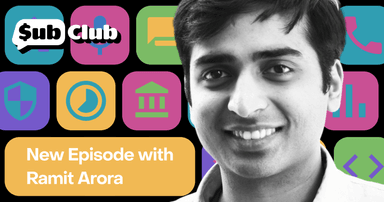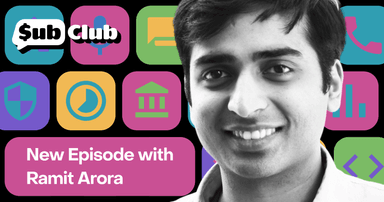Content marketing tips for apps: Seven lessons we can learn from MySwimPro
It takes time and a lot of hard work, but content, and the community that builds up around it, can help drive long-term sustainable growth.


Peter Meinertzhagen
When we spoke to GP Bullhound’s Eric Crowley last year about the technology advisory and investment firm’s latest Consumer Subscription Software report, he walked us through the three Cs: content, commerce, and community. Three things that the most successful consumer brands should have.
Content drives new users. Commerce converts those users. And community turns those users into engaged brand advocates.
Taking a content and community approach to building and growing an app business is hard. It takes time and trust in a vision to drive growth over a long-time period, where immediate results might be elusive or difficult to measure. MySwimPro, a swim coaching app, built their audience through content right from the beginning. So much so, that their content can be seen as a revenue-driving entity all of its own, separate to the app.
In this blog, I will provide you with key lessons to apply to your app’s content marketing. These lessons have come primarily from MySwimPro CEO Fares Ksebati’s podcast episode — shared below — but, throughout, I have expanded with further insight from my own experience. I’ve been working in content marketing for well over a decade, so it’s a pleasure to explore this topic from a subscription app’s point of view.
1. Gather your content ideas from customer and community questions
Effective content starts with listening.
Fares Ksebati began MySwimPro’s journey down the road of becoming a “content marketing machine” by addressing common swimming queries, taken both from their customer base and keyword research tools.
At this time, some nine or so years ago, keyword research tools were a much more reliable source of information for SEOs and content marketers. That really isn’t the case anymore, particularly as the data from these is either unreliable or non-existent for low volume searches.
But Fares’s initial qualitative approach to mining for queries is very much the way to go today.
I was getting people asking the same questions. And one day I was like: I’m just going to make a video that explains this because I’m telling the same people over and over the same thing. So I got up a whiteboard and I just explain swimming terminology. I started doing this on a weekly basis and it became known as the “whiteboard Wednesday”. In the very beginning I didn’t even have any cool looking footage. It was just me. Standing in front of a whiteboard, which you think for swimming, why would anyone pay attention to that? Because I was answering their questions.
Places you should look:
- Support tickets. Are there questions being asked frequently? Create content to answer them. In the beginning, Fares would make videos answering common questions and use them in support responses.
- Communities. You may not have your own place for a community to hangout (like we do with Sub Club), but there are certainly communities already existing in your niche — Reddit’s a good place to start. Scour the posts to see what questions and challenges people are having.
- Search Console query data for your website. If you already publish web content, and you have Search Console set up, you will be able to find what queries searchers are using to find your website already. Some of these will benefit from new devoted content focusing on them.
Such strategies not only attract new visitors through SEO but also establish your brand as an authoritative and responsive presence in your niche.
2. Content marketing takes years of persistence to really pay off
If you’re looking for rapid results, content marketing is probably not for you.
Fares describes it as a “slow grind” in the beginning, where early video efforts yielded only dozens of views. But the commitment to consistent, quality content paid off over the years, culminating in videos with millions of views and a substantial social media following.
Here are some tips from MySwimPro on sustaining your content marketing over time:
- Start small, think big: Early content may not explode in popularity immediately, but each piece adds to your brand’s repository, enhancing your authority and SEO over time.
- Persevere and be consistent: The compounding effect of regular, valuable content cannot be underestimated. It builds brand trust and establishes a loyal audience base.
- Bring passion: Fares emphasizes the importance of passion for the subject matter. Love for your topic can sustain your content creation when views or immediate financial returns are minimal.
- Monitor and adapt: Notice what works. For Fares, a video on a niche topic like a “flip turn” gained unexpected traction, gaining 75,000 views. These signals should inform the topics and styles of content that are working for your audience.
3. Content marketing is about so much more than acquisition
From its inception, MySwimPro’s content marketing wasn’t an acquisition channel, it was about building a brand and widening its presence.
I’ve always said to not view content marketing as a channel but as a broad marketing philosophy. For MySwimPro, content marketing is just how they “do” marketing.
Here are a number of additional benefits, beyond acquisition, that Fares highlights:
- Customer service: As we’ve already seen, by creating content that answers common questions or addresses typical challenges faced by users, your brand can reduce customer service demands, improve user satisfaction, while also acquiring an audience through search.
- Brand awareness and trust: Fares started with a vision to make MySwimPro a recognized name. His approach underscores that content marketing should aim to make your brand a trusted, familiar name, not just a one-time click. As the audience becomes more familiar with your overall brand, they’ll become more likely to convert (in more ways than one).
- Long-term strategy and adaptability: Brands must be prepared to evolve. Technologies and trends will come and go, but a strong brand will endure and adapt. In MySwimPros case, the Apple Watch didn’t exist when they started, but is now a significant part of their business. In five or ten years time, who’s to say what the new key part of tech will be? Whatever it is, there is one constant: a strong brand.

4. Use custom product page to track separate channels
MySwimPro recently started using custom product pages for each major social channel, and in doing so, can directly attribute app downloads and engagement to specific content efforts.

Each separate product page can have unique, tailored content, which is useful if you target different audiences on different social channels. Your App Analytics can also be segmented by custom product page, so you can see how page engagement or downloads differ by source.
Just keep in mind — returning to our previous tip — that the job of your content and social media channels isn’t to necessarily drive direct downloads, so consider these page’s analytics in the wider context.
4.5 But accept that your attribution will always have holes
Even when using Custom Product Pages to track different channels or other fancy analytics tools, complete attribution remains elusive. The journey from first encountering an app to downloading it isn’t always linear. Prospective users may see your content on one platform but choose to search for your app later or stumble upon it again through different means. This can leave significant gaps in your attribution models.
To bridge the gap in attribution, surveys can be an invaluable tool. By directly asking users during onboarding or via in-app surveys where they heard about the app, you can gather data that isn’t captured through analytics platforms alone.
Screen time app Opal uses this basic attribution method.
“We do attribution in a very simple way: we ask people in onboarding where they came from. And we found that to be actually the most reliable way of doing it. We also have all the fancy attribution software, but at the end of the day, just asking people where they heard about us [is simplest]. Then segments the cohorts based on the answer.”

5. You can monetize your content in more ways than your app’s subscription
Content creation, when executed well, not only serves as a marketing vehicle but can also become a revenue stream in its own right. Fares highlights how their YouTube channel is a second pillar of the company’s monetization:
Other than promoting their own app, MySwimPro monetizes their videos via:
- Ad revenue: Once your content reaches a certain threshold of views, YouTube pays the creator directly from ads inserted at various points. The platform pays creators based on CPM (cost per thousand views), which varies by content category but can be quite lucrative for popular channels. For MySwimPro, this revenue is more of a “nice to have”, rather than being a reliable source.
- Brand partnerships: Here, the advertiser has a shout-out at some point in the video — like an ad, but often presented much more natively as the creator is the one doing the shouting out. These typically pay more because the advertiser knows they’re paying for a specific, relevant, highly-engaged audience. The more trust you build with your channel, the more dedicated (and valuable) your audience are for such partnerships.
6. YouTube is unique as a brand engagement tool
YouTube has a unique capacity to engage viewers — its mix of short and long-form content make it exceptional for building trust, educating users, and fostering a community. Fares emphasizes YouTube’s role in MySwimPro’s content strategy, noting its effectiveness in not only reaching a broader audience but also in enhancing user engagement in a way that other platforms may not match. Those advantages include:
- Building trust through video: YouTube’s video format allows creators to establish trust more effectively than text-based or image-only platforms. Viewers see and hear the person, making the communication more personal and direct.
- Educational content: With its format and tools, YouTube is ideal for educational content. MySwimPro uses it to answer user questions and provide valuable swimming tips, catering to a diverse audience ranging from beginners to competitive swimmers. This broad appeal can introduce the brand to potential users who might not yet be customers but are interested in the content.
- Opportunities for expansion: The diverse audience on YouTube allows businesses to test ideas for new features, products, or services. For instance, content that resonates with a particular segment can indicate market demand and inform product development.
7. Use call-to-actions thoughtfully
Looping back to the first tip in this blog, every piece of content is fulfilling a purpose for the audience. Most fundamentally, you’re probably answering a question. Your call-to-action (CTA) should link back to the audience’s goal: what would make most sense to the user experience?
There are a number of different approaches you could take here — let’s explore a few, using app YouTube channels as the focus.
You could use a generic CTA at the end of the video, when the main content has finished. In this example from Headspace, the CTA is unobtrusive and doesn’t feature a voiceover — while it will be obvious to the viewer what the brand is, it’s not obvious that there’s an app to go download. This is the approach taken by the majority of Headspace’s videos.

You might instead create content where the whole thing is effectively an ad for the app, like Duolingo, where most of their videos are product related. In Duolingo’s case, they have the luxury of having a huge user-base and great brand recognition. They are not trying to build an audience just focused on their content, irrespective of the app. For apps taking an approach like MySwimPro, these content pieces should be in the minority — where the other content converts users into followers, these occasional product pieces act as a reminder that there’s an app to download.

MySwimPro uses a more sophisticated approach to product placement in their content. In this video, the user goal being addressed is “how to plan a 30 minute swim workout”. While the video isn’t explicitly about the app, the app is directly integrated into the content, while still focusing on answering the user’s question. This approach neatly ties in the app as a solution to the user’s problems. This style of content only forms a minority — most videos on their channel relegate to the CTA to a link in the description.

Which approach you take depends on your overall content strategy. For MySwimPro, which is trying to build a substantial audience and monetize in more ways than just the app, it’s a wise choice to not include prominent CTAs in all content. But when they do, it’s done thoughtfully and integrated in a way that feels native.
Takeaways
- Listen to your audience: Generate content ideas by gathering customer and community questions — this should form the backbone of your content strategy.
- Be persistent: Content marketing requires patience and consistency to pay off, so focus on delivering quality regularly and don’t expect instant results.
- Think beyond acquisition: Content marketing is much more than a user acquisition source — it supports every part of the funnel and builds a strong resilient brand.
- Track with custom product pages: Use custom product pages to attribute downloads and engagement to specific channels, gaining a better insight into their individual imnpact.
- Accept attribution gaps: No matter what, you’ll have gaps in your content marketing attribution. Fill some of those gaps with surveys, such as a “how did you hear about us” question during onboarding.
- Diversify monetization: Monetize your content through various methods beyond your app subscription, such as ads and brand partnerships.
- Consider YouTube’s unique potential: YouTube’s combined short and long-form format makes it an ideal platform for building trust, educating users, and introducing new features.
- Use thoughtful CTAs: Align your call-to-actions with your content’s purpose and the audience’s goals, thoughtfully integrating them to enhance user engagement and conversions.
In-App Subscriptions Made Easy
See why thousands of the world's tops apps use RevenueCat to power in-app purchases, analyze subscription data, and grow revenue on iOS, Android, and the web.



